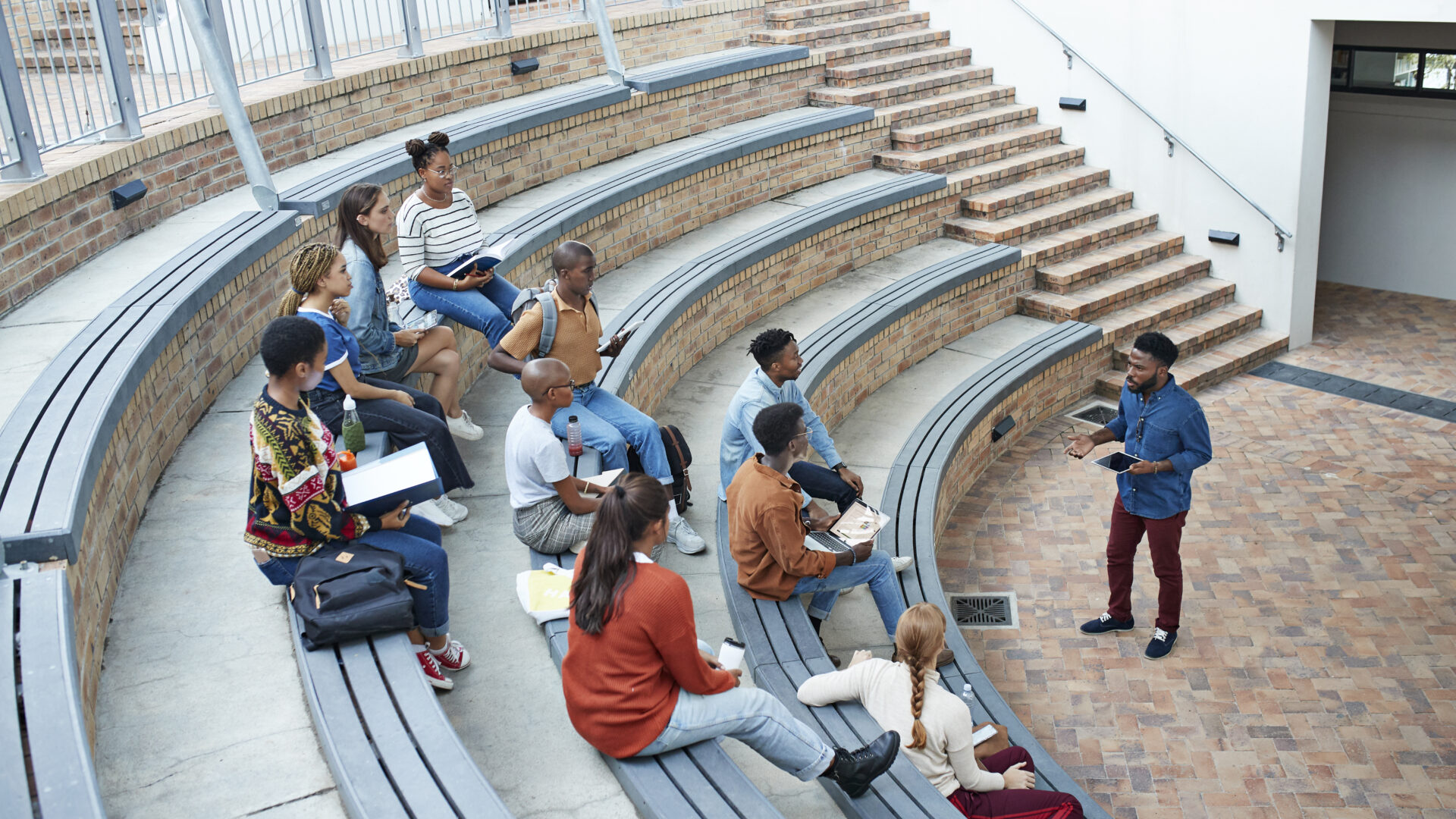
One peek under #minihbcu on TikTok, and you’ll find the epitome of Black joy. Young Black students can be seen singing, dancing, laughing, and soaking up all that their community has to offer.
But make no mistake. These enclaves aren’t to be confused with real HBCUs– Historically Black Colleges and Universities that were established in the early 19th century to allow people of African descent to pursue higher education in the United States. Today, writers like Ta-Nehisi Coates regards Howard University as “The Mecca,” and homecoming celebrations such as Spelhouse remind us that aside from producing some of the best and brightest Black scholars the world has ever seen, these institutions are incubators for Black culture.
On the flip side, Predominantly White Institutions (PWIs) house a student body where white individuals make up the largest racial demographic on campus. These institutions are plentiful, and often condemned for their fractional populations of marginalized folks. For this reason, Black students are often eager to find community in these spaces.
Somewhere in the middle lies a small but mighty collective, what some Black students at PWIs are calling mini HBCUs. While the name may be new, Black folks have been creating communities such as these since they’ve attended PWIs. “These experiences help with networking, connecting, and building legacy,” says Shannon Ashford, Director of Diversity, Equity, and Inclusion at Duke University. “That’s important for anyone to have, but especially if you are not in the dominant group of the community that you’re a part of.”
Though these mini HBCUs can never truly replace HBCUs and their purpose, these spaces are making room for Black students to find their tribe and be authentically themselves. These communities include initiatives much like the University of Southern California’s majorette dance team, created by Isis Lang.
Keep reading if you’re in search of your community and more specifically if you want to know how to be a part of it on campus.
Put Yourself Out There, Seriously
“The first step is using your resources, especially social media,” says Leslie Edwards, President of NYU’s Black Student Union. “Before sliding into someone’s DMs, find common ground.” Maybe you’re in the same club, study the same topics, or have a similar fashion sense. Then, be honest about your goal. Something as simple as, “Hey, I’m new to campus. What are some resources that helped you connect with [other] Black people?” is powerful yet effective, says Edwards.
Follow Those New Black Student Pages
Alongside the usual “welcome” pages for incoming students are social media pages that cater directly to students of color. For example, @nyupoc is a page where incoming class of 2024 students of color could submit their photos along with a bio in order to introduce themselves. Pages like these allow you to know who is out there in your community, as well as get your own name circulating.
Yes, Your School’s Student Life Center Is Actually Useful
“I would suggest for students to get connected to [cultural] centers if they exist at their [university], and [at] most PWIs they do,” says Ashford. Get acquainted with the administrative offices in these centers. Not only do they have staff that are dedicated to helping you thrive as a minority at your university, but they also provide community-building resources.
Step Out Of Your Comfort Zone
“You know how Hinge is ‘created to be deleted?’ I think that BSU is kind of the same,” says Edwards. As long as you pop into an event or two eager to learn and mingle, then you don’t have to come back if it isn’t your thing. But just know that it’s always there for you when you want to connect. “From here, think about other spaces to cultivate community in”, says Ashford. “You’d be amazed how hanging out with just one person in the quad, library, or dining hall can cause a ripple effect.”
Keep Up With Your Connections
Because most people meet the core of their community during freshman year, over time, your schedules will naturally differ. In order to keep up with one another, don’t sleep on the power of a like and comment on social media to keep the spark alive, says Edwards. This reminds your network that even though you can’t see them in-person as much as you’d like, you’re still supporting them from afar.
While college is all about finding yourself, it’s also about finding your people. In a world where the odds are often stacked against Black individuals, it’s important to connect with peers and colleagues that share in your experience. At times, it can feel like all we have is each other, says Ashford. “If we’re not continuing to pour into our community, it’ll dissolve.”